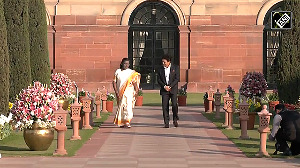The ministry has, in turn, forwarded it to the 13th Finance Commission to study and analyse the recommendations from a federalist standpoint and, in particular, from the point of protecting and ensuring the buoyancy of revenues of both the Centre and the states. The Finance Commission has, as a part of its brief, started engaging with the chambers of commerce and selective trade associations to ascertain their views and identify challenges and concerns with regard to the chosen model of GST. It is also looking at global best practices in this regard.
Now, the central irony of the whole debate is that while the contours of the dual GST model are known in parts, as a result of the public interactions that the chairman of the Empowered Committee has had, the report of its Working Group is not released to the public. Hence, the recommendations are not known in full and thus the interactions of the Finance Commission with the above stakeholders is with regard to a GST model whose full details are not known to the public! Further, it could well be that the Finance Commission could recommend a materially different GST!
Nevertheless, on the 'how' of the GST, it seems clear that the recommended dual GST will have a federal part and a state part. Further, the federal and state GST will both consist of a goods tax and a tax on services. Thus, both taxes will apply to goods and services. Further, the federal GST and the state GST will consist of multiple rates insofar as they relate to goods, and will comprise a single rate insofar as they relate to services. Full input tax credits would be available in regard to the federal GST and the state GST. The two taxes will operate in parallel and throughout the supply chain. What is therefore required to be determined is the taxable event which gives rise to the two taxes.
Internationally, GST is based on supplies of goods/ services, rather than on manufacture and sales, and there are fairly elaborate rules governing the time and place of supply. It is very likely that the dual GST in India would also incorporate detailed rules in relation to determination of the taxable event and also the taxing jurisdiction.
On the rates again, the excise duty as well as the state VAT have multiple rates, with a typical 8 per cent/16 per cent two-rate structure for excise and a typical 4 per cent/12.5 per cent two-rate structure for the state VAT. On the services front, it is not clear as to whether the federal and the state GST will apply on the same set of services or they will operate on a mutually exclusive basis. Also, the present rate of service tax is 12 per cent and it is a moot point as to what the single rate of the federal and the state GST will be on services.
The cumulative incidence of the excise duty and the state VAT at present works out to around 22 per cent to 24 per cent of the retail sales price. There is an expectation that under the GST, the aggregate incidence of the tax should be significantly lower.
There is much debate on the likely aggregate rate of the GST and there appears to be a consensus that it may approximate 20 per cent. However, recent debate suggests that a further reduction in the aggregate rate of GST is being contemplated. It is also possible that several other design elements of the GST can undergo changes. The additional benefit, apart from the reduction in rate, of the model is that the base on which the federal and state GST will be charged will be uniform and this will ensure that there is no cascading of taxes.
It appears that it will only be by end 2008 that things will crystallise on several aspects of the GST. A balance will need to be struck between the benefit of simplicity in the chosen model of the GST and the socio-economic objectives that are sought to be achieved. Clearly, tradeoffs will have to be made. Nevertheless, the point of the 'when' on the introduction of the GST is still answered by the response of the April 2010 deadline.
This means that the country will only have a period of 15 months, from beginning 2009 to March 2010, to ensure that all the constitutional (if any) policy and legislative changes take place. It does seem increasingly a big challenge but it is still a very real goal in the eyes of both the Central and state government circles, regardless of the political persuasion of the parties in power. This is very positive thing in itself, but the point is whether there is enough time to get the job done. There really now needs to be a strong and focused push so that the April 2010 deadline on the introduction of GST is met. All stakeholders need to work closely with the powers that be to make this happen.
The author is leader, indirect tax practice, PricewaterhouseCoopers. He can be contacted at pwctls.nd@in.pwc.com







 © 2025
© 2025